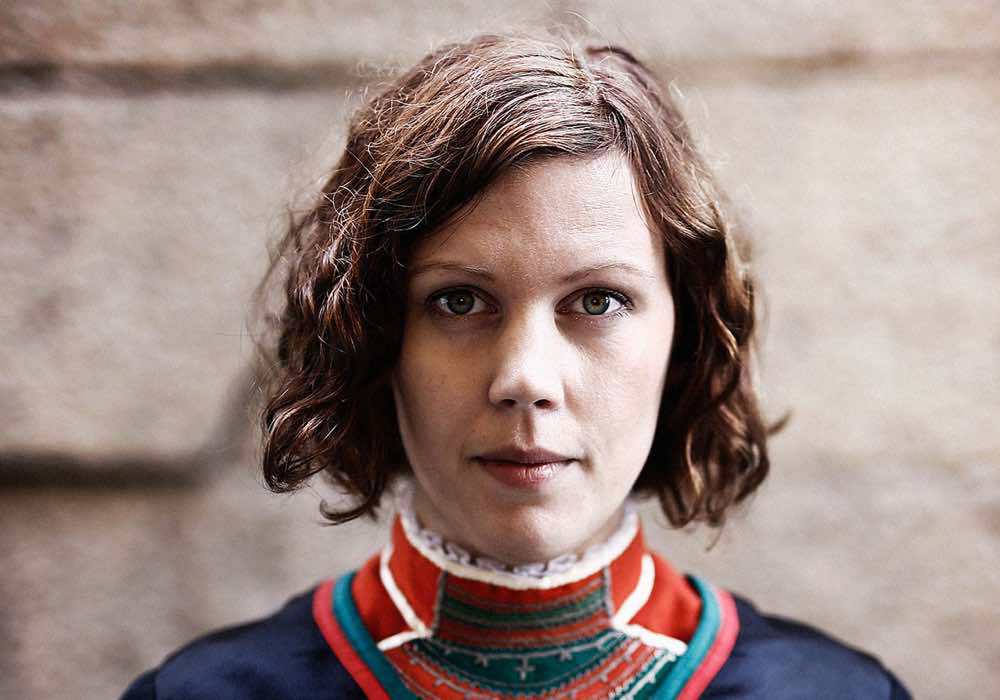Amanda Kernell’s Sami Blood is an astonishingly accomplished and movie feature debut, which follows an Indigenous Swedish girl caught between two worlds. Read our interview with writer-director Amanda Kernell. Read our review of Kernell’s second feature, Charter.
Every once in a while at TIFF, there’s a filmmaking debut so accomplished, specific, and moving that it heralds the arrival of an important new cinematic voice. Amanda Kernell’s Sami Blood is such a film. Although the film’s setting and subject matter may seem a world away, it’s an all too familiar tale of assimilation and alienation.
[clickToTweet tweet=”SAMI BLOOD is a tale of assimilation and alienation.” quote=”SAMI BLOOD is a tale of assimilation and alienation.”]
Sami Blood opens with an elderly woman heading to her estranged sister’s funeral. Her adult son brings her some “music from her people”, the Indigenous Samis, to listen to on the way. For him, it’s an exotic curiosity, but for her, it’s something more. The way she denigrates it so completely suggests the lady doth protest too much. As we flashback to her childhood when she went by a different name, Elle Marja, we start to put together the pieces about why she left her people and became so hostile toward the very mention of them.
In North America, we’re not used to thinking of Indigenous people as white people, but then the very meaning of the word “white” has changed throughout history. Sweden’s indigenous people, the Samis, are fair-skinned mountain-dwellers, but they’ve been the subject of deep prejudice in the country for years. Starting in the late 1800s and continuing well into the 20th century, Sweden forcibly removed the Samis from their families and sent them to boarding schools, much like residential schools in Canada, though the goal didn’t seem to be total assimilation. It wasn’t until the 1990s that they were even recognized as an Indigenous people who should be accorded rights.
In the 1930s, Sami teenager Elle Marja (talented newcomer Lene Cecilia Sparrok) finds herself caught between two worlds. Bright and quick, she thrives on the intellectual challenges the mandatory boarding school provides, from learning Swedish to mastering other subjects, and on the approval of her teacher for her successes. But this very education is teaching her to hate her origins, to long to live in a city, and to fit in with a group that won’t accept her as she is. She accepts the new set of rules that her younger sister rebels against, like that she can no longer yoik (the traditional Sami singing style) as she would at home. Does Elle Marja want to continue her studies in the city because she’s internalized the racism she’s been taught, or because it’s truly what she prefers? Both are often true, and each step is heartbreaking because of it.
[clickToTweet tweet=”‘But this very education is teaching her to hate her origins.’ – @bwestcineaste” quote=”But this very education is teaching her to hate her origins.”]
The Swedes practiced phrenology, a cousin of eugenics, to study what made the Samis different — and to humiliate them in the process. One of the film’s most haunting sequences involves a group of government visitors coming to the school. It’s billed as a reason for excitement, with Elle Marja given the prestigious role of welcoming them with a speech and traditional Sami gift. But the visitors are there to gawk at the Samis, examining them in a lineup like zoo creatures, before subjecting them to phrenological studies: their skulls are measured before they’re forcibly undressed and photographed naked — in front of their peers and the so-called doctors.
The purpose of the Swedish “residential schools” as told in Sami Blood is unclear: the schools indoctrinate the Sami students with Swedish culture, and then make sure they know that they can never join it. The Samis are not allowed to go on to higher education, and they’re expected to return to their people because the pseudo-science of the day held that they couldn’t survive elsewhere. At school, the Samis were still required to wear their distinctive, traditional costumes. But it ultimately served more to brand them as different than to allow them to maintain some semblance of their culture. And it doesn’t take long before Elle Marja is subject to a particularly brutal act by some of the local boys for this reason.
[clickToTweet tweet=”Does fitting in mean losing who you are?” quote=”Does fitting in mean losing who you are?”]
Elle Marja doesn’t like being treated as “other”. It makes her long to fit in with the “regular” Swedes. When she happens on one of her teacher’s dresses hanging on a clothesline one night, she decides to dress up and head to town for a dance. She just wants a regular night of teenage fun, dancing with boys, and to receive some kindness. But as soon as she’s unmasked, she’s ostracized by both groups: the Swedes don’t want her, and the Samis are embarrassed by what they see as her betrayal. It’s never clear if the boy she meets and shares a kiss with knew her secret all along, as his friends have no trouble identifying her as Sami, and whether he really likes her or is seeking something “exotic”. His kindness turns to ice too quickly.
Does fitting in mean losing who you are? And how do you reconcile your new life with your old identity, which will always be a part of you? There are only partial triumphs in Sami Blood, but finding peace means reckoning with what you’ve given up and the hold it still has on you.
This review was originally published on September 11, 2016 as part of our TIFF 2016 coverage.
Read more: Writer-Director Amanda Kernell talks Sami Blood >>
Read more: Sundance 20 review: Charter (dir. Amanda Kernell) >>




